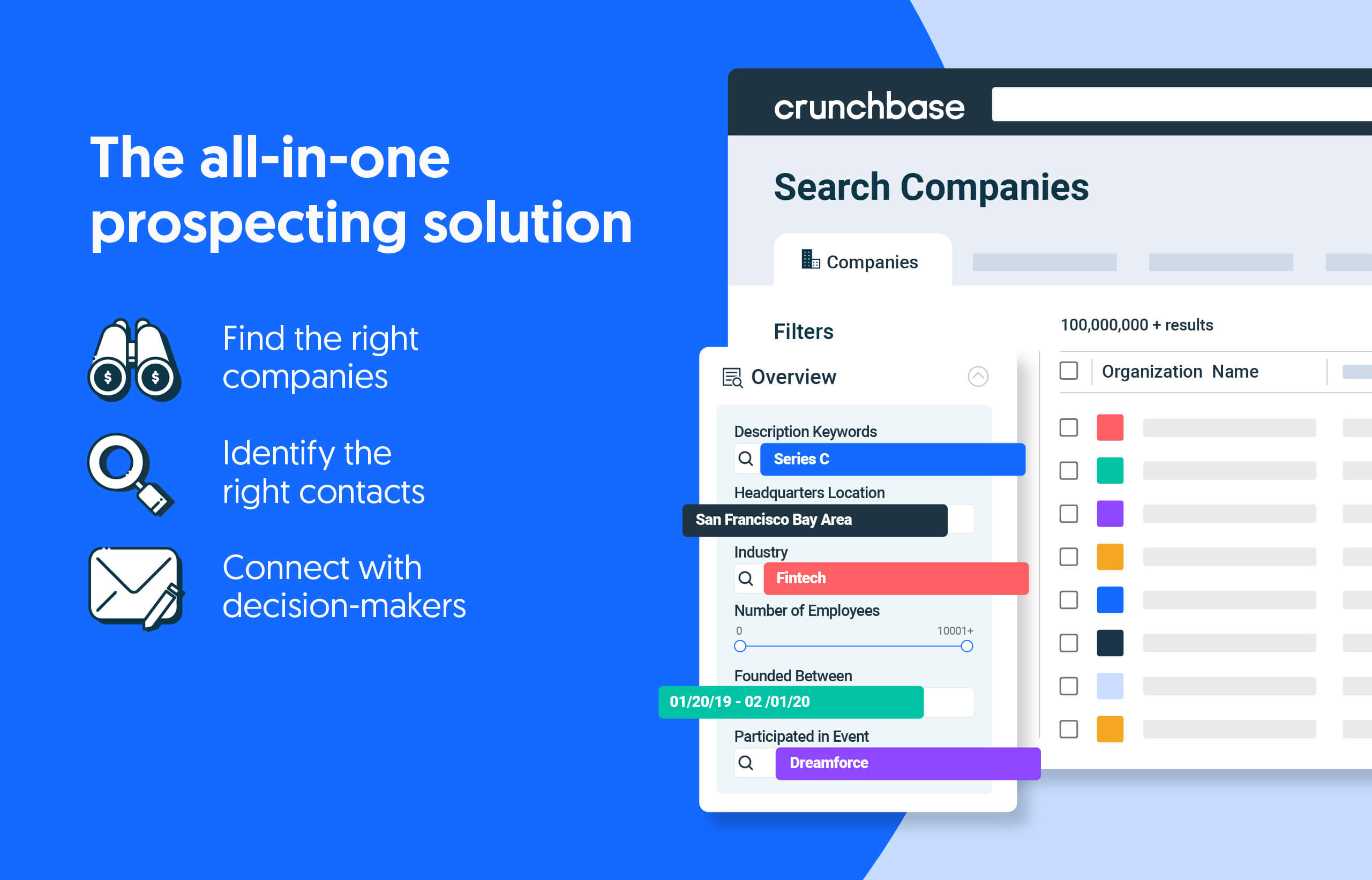For several years, you couldn’t do better than to work at a tech startup.
Employees enjoyed competitive wages, luxurious benefits and valuable stock options as the tech startups they worked for swam in venture capital funding and valuations soared.
But those stock options aren’t as valuable anymore. At least not on the secondary market, where buyers and sellers can trade pre-IPO stock. In 2021, thanks to high valuations, employees could sell shares of the private companies they worked for at rather generous prices.
Search less. Close more.
Grow your revenue with all-in-one prospecting solutions powered by the leader in private-company data.
Now, the secondary market is calling companies’ bluff on those valuations.
The discrepancy between what sellers are asking for and what buyers are willing to pay (known as the bid-ask spread) on secondary markets platform Forge Global is around 22%, quelling what was previously lively and bustling trading activity, according to the company.
This has created a logjam of sorts. Forge Global and EquityZen, platforms that help people trade shares in private companies, have noticed trading activity become quieter.
“At the same time that you’ve got a lot of activity in sellers, the price that buyers are willing to pay in a period where public tech dropped precipitously has been challenging,” said Kelly Rodriques, CEO of Forge Global. “Trade volumes have come down dramatically.”
Now, stock owners must decide whether to sell shares for a lower price than they’d hoped for, or try to ride out the frosty market — a choice that comes with the risk that their companies will perform down rounds, or new financings at lower valuations.
Shares trade at half price
Many tech companies have performed mass layoffs and cut costs in the past year in an attempt to cling to their valuations.
But those valuations are all but worthless on the secondary market, where it’s all about what a buyer is willing to pay for a slice of a private company. In November, Forge Global saw companies trade at around 47% lower compared to valuations set with their most recent rounds of funding. EquityZen reported stocks were trading at an average of 40% lower.
“[That’s] some of the lowest discounts that we’ve seen,” said Akshata Bailkeri, head of research at EquityZen.
Laid-off tech workers looking to liquidate their assets amid a looming recession are not selling shares at the prices they were once able to. This has led to a stalemate between sellers and buyers that is a sharp turn from 2021, when activity on the secondary market bustled
“The secondary market was thriving a lot in 2021,” Bailkeri said. “When you see public market valuations go up, you can see that relative interest in these private companies in similar technology-related spaces also get that attention.”
Risking a down round
If sellers think they can hold on to their shares until the market picks up, that could quickly change if the startup lowers its valuation or raises a down round. But, “even with no down rounds, shares are trading at a steep discount,” according to Rodriques.
Down rounds make shares in the company less valuable, especially for common stockholders such as employees and founders.
“The people who are going to be most hurt are the people who have left and exercised their stock options at the super hot startup,” said Healy Jones, an executive at startup consulting firm Kruze Consulting. “When that down round happens, those people are going to be particularly in trouble.”
Some companies have already made peace with the fact that their peak valuations were just too high. Stripe cut its valuation by 40% in the span of six months. After flying at a lofty $39 billion in 2021, Instacart’s valuation has since dwindled to $10 billion. Klarna slashed its valuation from $45.6 billion to a mere $6.7 billion in January with new funding. Several other prominent companies announced down rounds in December.
But there is still hope for some companies with strong performance metrics. If they can hunker down through 2023, they may continue to grow into their valuations.
“If a company continues to perform … even if the market’s down, they can grow out of this within a year or two,” Rodriques said. “And that’s why you saw companies resisting raising capital if they didn’t have to in 2022.”
A return to normalcy
When will the secondary markets reset to normal?
First, the IPO window needs to reopen. Many of these startups are ready to go public. When there are too many sellers on the secondary markets, it’s difficult to sell shares at a higher price point.
Second, that 22% discrepancy needs to decrease. According to Forge Global, the market doesn’t trade well at bid-ask spreads above 11%, which is causing the current standoff between buyers and sellers.
And lastly, if companies are buying back their shares — or if their investors are buying more on the secondary market — that’s an indication the startup is in good shape and is worth buying, according to Rodriques.
But until then, buyers and sellers on the secondaries are at an impasse.
“Right now, because the IPO window is closed, there is an intense pressure building up around liquidity in the market,” said Rodriques. “And that’s been building for 12 months.”
Illustration: Dom Guzman

Stay up to date with recent funding rounds, acquisitions, and more with the Crunchbase Daily.



![Illustration of a unicorn with a green money background. [Dom Guzman]](https://news.crunchbase.com/wp-content/uploads/Unicorn_Money_v1-470x352.jpg)

![Illustration of a guy watering plants with a blocked hose - Global [Dom Guzman]](https://news.crunchbase.com/wp-content/uploads/quarterly-global-3-300x168.jpg)
67.1K Followers